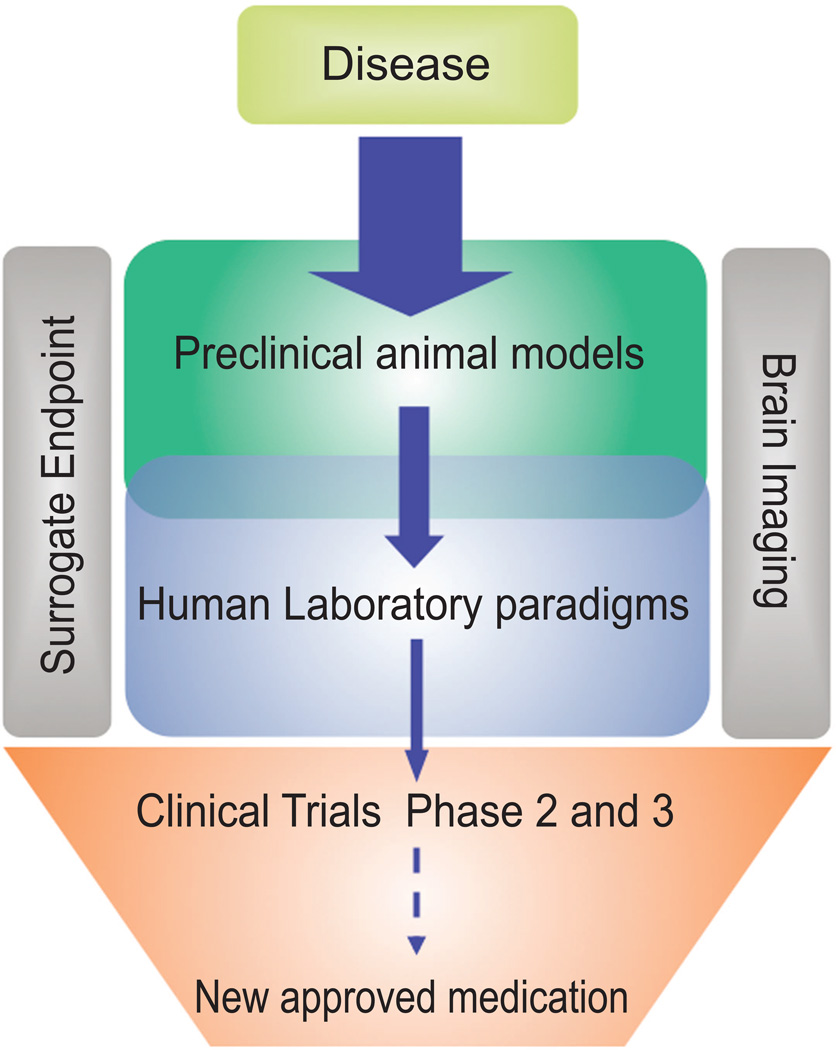Figure 1.
Schematic representing the critical steps of translational research. A relatively large number of biological targets and promising chemical entities are available for preclinical investigation. The availability of well validated animal models is critical to screen these molecules. A limited number of molecules with satisfactory pharmacological and toxicological profile are moved into the clinic. Human laboratory paradigms can be used to provide initial evidence of efficacy in humans. The utilization of appropriate surrogate markers that possibly overlap preclinical endpoints (i.e, alcohol intake, cue- and stress- induced alcohol craving) is fundamental to translate preclinical findings into meaningful clinical information. Brain imaging techniques play a critical role in bridging preclinical and clinical research: their use provides an unprecedented help in new medication development .

